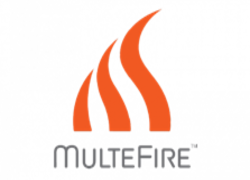Huawei joins MulteFire Alliance to promote development of private LTE enterprise networks on unlicensed spectrum

Huawei, a global ICT solution provider, has joined the MulteFire Alliance, an independent organisation dedicated to the promotion and development of MulteFire technology.
MulteFire is an LTE-based next-generation cellular communications technology that operates only on unlicensed spectrum and focuses specifically on enterprise broadband access and IoT markets. Since its founding in December 2015, the MulteFire Alliance has attracted Qualcomm, Nokia, Ericsson, Intel, and other leading companies as contributing members. By extending the cellular technology to unlicensed spectrum, MulteFire not only satisfies broadband access but also meets the requirements of narrowband interconnections.
Leveraging robust wireless connectivity, self-organising, and easy-to-manage features for 3GPP-compliant evolving LTE technologies, MulteFire delivers higher performance in local area networks. The MulteFire Alliance endeavors to promote the industrial development of unlicensed spectrum and cellular technologies with all associate members.
Huawei aspires to focus on the feasibility of MulteFire applications towards enterprises. By extending the advanced cellular technology to unlicensed spectrum, the MulteFire Alliance alleviates enterprise customers’ concerns regarding spectrum acquisition and further promises LTE-like performance with Wi-Fi like deployment simplicity.
The multi-service bearing capabilities of LTE networks meet the diversified network requirements of industrial customers, helping them reduce investment costs on network deployment, operation, maintenance, personnel training, and other aspects.
“Wireless connectivity has become more and more critical for enterprise customers, especially in vertical industries, like transport, electricity, manufacturing, and logistics,” said Mr. Peng Jianhua, president of Huawei’s Enterprise Wireless Business Unit. “Huawei has decades of experience in handling wireless cellular technologies and expects to cooperate with industry partners to solve key issues, such as air interface technology, test certification, and chip support in enterprise wireless products. By joining the MulteFire Alliance, we are steering the future of wireless for vertical industries and assisting the MulteFire technology to be more widely available, helping finalise the creation of a healthy industrial ecosystem.”
Huawei looks forward to contributing to a number of work groups in the MulteFire Alliance. In the marketing work group, Huawei will share the typical application scenarios and evolution of enterprise wireless as an input to the technical solution of the alliance and assist the planning of the technical evolution roadmap.
In the Technical Specification Group (TSG), Huawei is dedicated to the task of broadband mobility improvement and coverage performance, helping the MulteFire Alliance launch an IoT technical scheme. Huawei will submit technical schemes with a competitive edge and evaluate the system performance.
By working closely with other members, Huawei hopes to formulate a detailed standards rollout schedule and promote the study of viable solutions that may compete with the standard solution from the perspectives of air interface, network architecture, and automatic network O&M.
Huawei will not relinquish any efforts in the pursuit of advancing the growth of the E2E MulteFire industry chain and play an active role in the construction of MulteFire certification system. This is accompanied with a strict commitment and dedication as to the verification and promotion of MulteFire technical standards.
For more information on the Alliance, visit http://www.multefire.org
Comment on this article below or via Twitter @IoTGN
